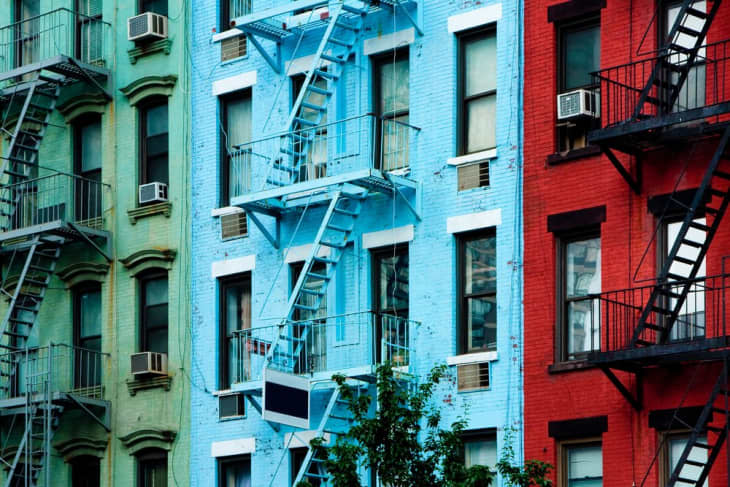A History of New Yorkers’ Love/Hate Relationship with the Fire Escape

They’re a refreshing escape. They’re a terrifying safety hazard. They’re an eyesore. They’re a beloved part of the urban fabric. For as long as there have been fire escapes, there have been mixed opinions about fire escapes.
The zigzagging metal stairs that many people associate so closely with the look of New York first started to appear in 1860, when a revision to the state code required buildings to have them. Originally the laws were poorly enforced, but that started to change when a series of deadly fires, including a 1911 fire at the Triangle Shirtwaist Company that killed 146 garment workers, most of them young women, focused the city’s attention on fire safety.
The fact that they were only intended for escaping burning buildings didn’t keep people from using their fire escapes for other things. For those living in hot, crowded tenement buildings the fire escape provided a welcome respite: people used them for everything from chilling food to sleeping, dragging mattresses outside during the summer nights. In West Side Story, an NYC-based retelling of Romeo and Juliet, the famous balcony scene took place on a fire escape.
A 1968 change to the New York City building code put an end to the construction of fire escapes: new buildings were required to have sprinklers and interior stairwells. And some developers are removing them from older buildings, arguing that they’re not attractive and weren’t part of the buildings’ original design. But those iconic metal Zs can still be seen on thousands of buildings around the city. Although I haven’t heard of anyone sleeping on one, people still use them for quite a few non fire-escaping purposes; we’ve run quite a few pictures over the years of fire escape gardens, with commenters pointing out (rightfully) that an excess of plants could prevent people from being able to use the stairs during an actual fire.
But just because you think of your fire escape as a balcony doesn’t mean it was designed to be one; since fire escapes are only intended to be used as a means of egress during a fire and not for permanent occupation, they don’t have the same kinds of railings and guards that an actual balcony would. This fact was sadly highlighted by the death this August of a young Broadway star, who slipped and fell while hanging out with a friend on a fourth-floor fire escape.
Some folks caution against using the fire escape as a hangout at all, but if the temptation of having your very own outdoor space above the city is too great, just remember that your perch is a precarious one — and exercise caution.
You can read more about the history of the fire escape in the New York Times. Bowery Boogie has lots of vintage photos of people sleeping, hanging out, and even climbing (!) on their fire escapes.